Swine or Pig, or Hog, is one of the oldest domestic animals in the world. The pigs become domesticated in the bronze age from Wilde boar. The swine are reared as farm animals and supply a large protein for human consumption. Pig farming becomes profitable due to low maintenance cost, take a small amount of feed, requires less space, and produce multiple kids at each birth. However, farmers are facing several swine diseases on their farms. Pigs suffer from a significantly fewer number of diseases.
Most Common Swine Diseases
Pigs are omnivorous (eat any things they get). Pigs require a tiny place to live. They can adjust themselves to any environment quickly. Pigs are suffering from bacterial, viral, or protozoan diseases. The most common pig diseases are highlighted below:
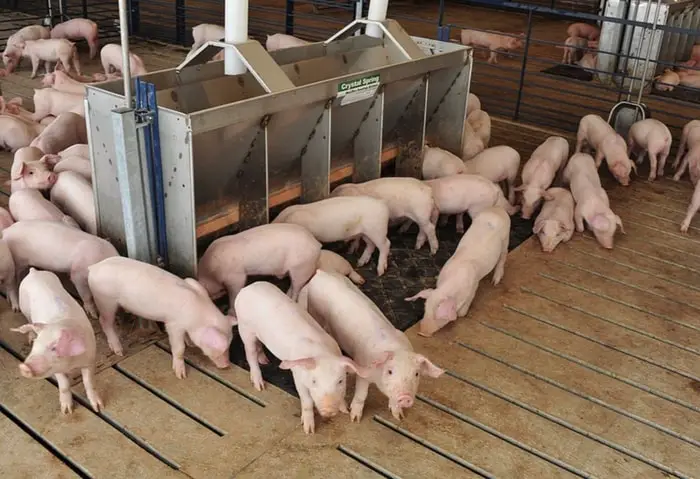
1. Classical Swine Fever or Hog Cholera
Classical swine fever is the most common viral disease of exotic pigs. Pestivirus causes the disease under the family Flaviviridae. The virus is similar to Bovine Viral Diarrhea in cattle. The disease is characterized by fever, septicemia, hemorrhage in the internal organs, anorexia, lethargy, and death. There is no specific medication and drugs available for the disease. Isolation of the affected animal and strict biosecurity can prevent the further spread of the disease.
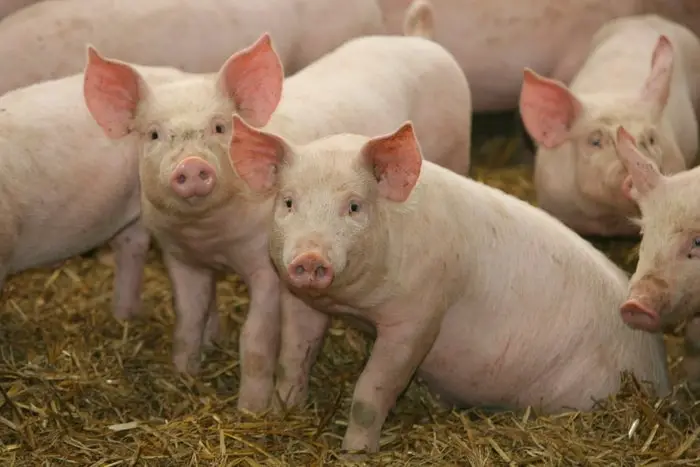
2. Swine Flu
The Swine flu is a human flu disease caused by the Influenza virus of H1N1 strains. The disease originated from pigs and spread to human beings. The disease become pandemic in 2010 in east Asian countries like Hong Kong, China, Japan, Vietnam, Cambodia, Lous, and Singapore. The virus is highly contagious and spread very rapidly from sneezing by air.
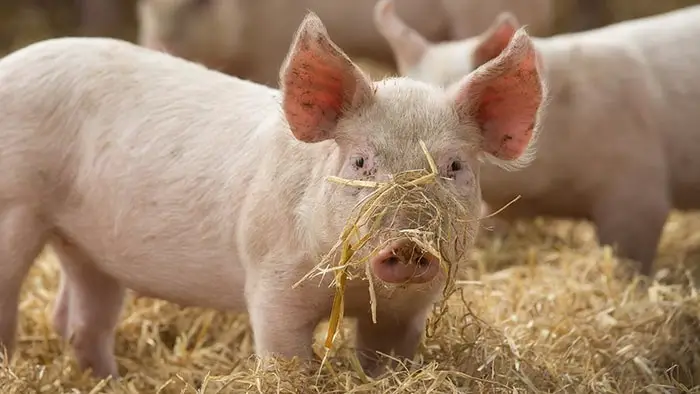
3. Swine Diseases: Coccidiosis
Coccidiosis is the most common protozoan disease of pigs and piglets caused by eight species of Eimeria and one species of Isospora protozoa. The disease mostly affects piglets of 5-15 days old. The disease is characterized by diarrhea, weakness, presence of blood in the feces, dehydration, lethargy, and death of piglets. The preventive measures of coccidiosis are coccidiostat in the feed and the improvement of hygiene of the pig house.
4. Mastitis in Pigs
Mastitis is a common bacterial disease in lactating sows. The disease is caused by E Coli, streptococcus, staphylococcus, and some other bacteria. The disease is mostly seen after two days of parturition and happens sporadically in the herd. The disease is manifested by inflammation of mammary glands, changes in milk quality, fever, swelling of the mammary gland, and complete cessation of milk production. You can treat by long-acting antibiotics and prevent by improving the house’s hygiene, especially during breeding.
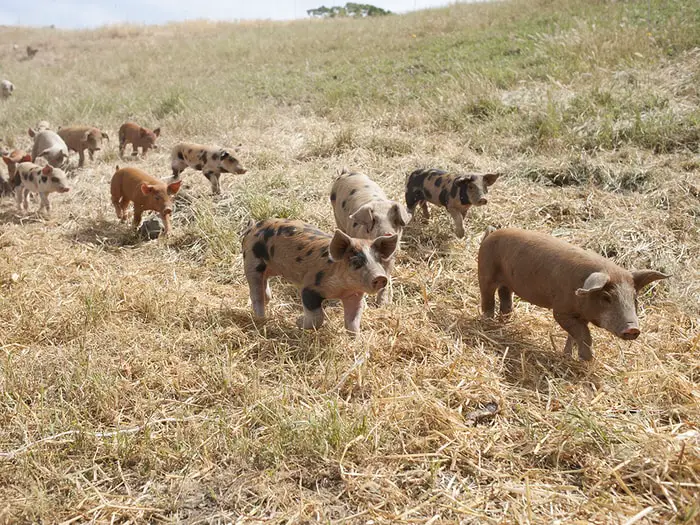
5. Porcine Parvovirus (PPV) Infection
Porcine Parvovirus infection is the leading cause of stillbirth and mummification in breeding pigs. The PPV is the ordinary inhabitant of the pig’s intestine and does not exhibit any clinical signs. The virus affects the sows then they are facing any low immunity or stressed. The clinical signs include stillbirth, infertility, small litter size, mummified fetus, and permanent sterility. The disease can be controlled by mass vaccination in the herd. The PPV does not transmit to humans or other domestic animals.
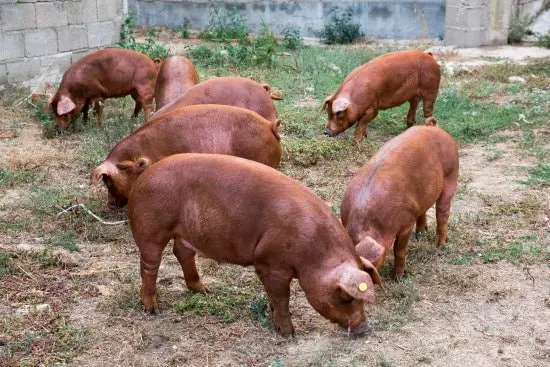
6. Swine Dysentery
Swine dysentery is a bacterial disease caused by B hemolysin produced by Brachyspira hyodysenteria. The bacteria is an anaerobic spirochete that produces toxins in an anaerobic condition of pigs’ intestines. Other organisms also contribute to this disease. The clinical signs include loose feces, dehydration, fever, and pigs may die peracute. Therapeutic antibiotics may be used early to treat the disease.
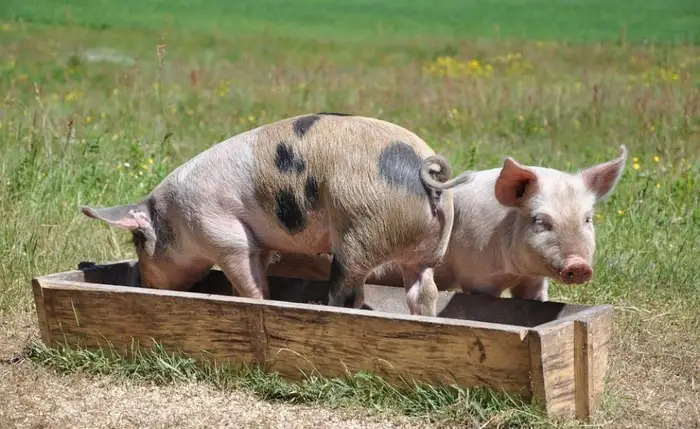
7. African Swine Fever
African Swine Fever (ASF) is a highly contagious viral disease of domestic and wild pigs caused by the ASF virus under Asfarviridae. The disease may transmit by direct or indirect contact, fomites, and pork. The disease is manifested by fever, depression, loss of appetite, weakness, and death. Proper biosecurity measures can prevent the disease in the pig herd.
8. Swine Brucellosis
Swine brucellosis is a contagious, zoonotic bacterial disease of pigs caused by Brucella suis. The organism multiplies in the intestine and is localized in various organs and tissues of affected animals. The bacteria caused local inflammation of the genital organs in both male and female pigs. The disease is seen by abortion, stillbirth, infertility, and orchitis in male pigs.
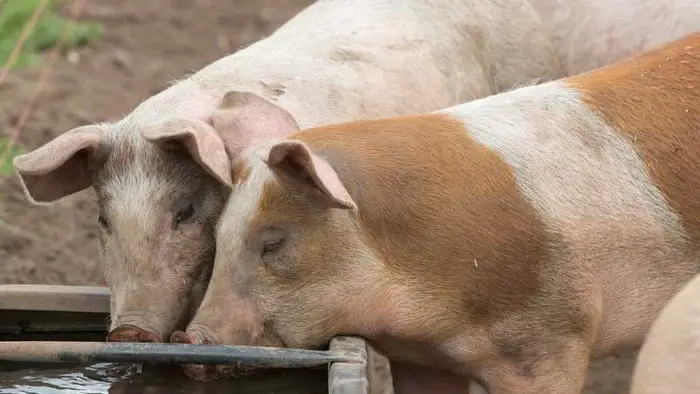
9. Pseudorabies in Pigs
Pseudorabies is a contagious viral disease of pigs that can also affect cattle, sheep, goats, cats, and dogs. The Pseudorabies virus causes the disease under the family Herpesviridae. The virus causes abortion, stillbirth, small litter size, and infertility in swine. There is no specific treatment for pseudorabies. The disease can be prevented by strict biosecurity and the separation of sick animals from healthy herds.
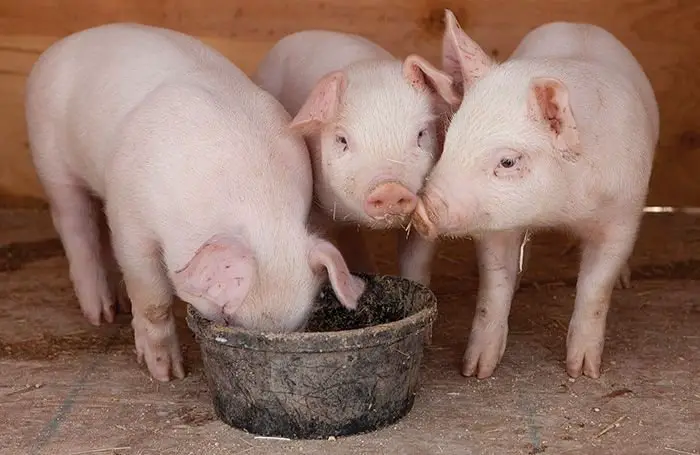
10. Exudative Dermatitis or Greasy Pig Disease
Greasy pig disease is a bacterial disease of the skin of pigs caused by Staphylococcus hyicus. The disease is also known as Exudative dermatitis, greasy skin, or marmite disease. The clinical signs of the disease are dermatitis in the tip of the ears, neck, soft skin of the abdomen, and whole body of the affected pigs. The disease can be treated by a broad-spectrum antibiotic, dressing, and cleaning the affected skins. Strict biosecurity and proper hygiene of the pig’s house can prevent the disease.
Concluding Remarks on Swine Diseases
Swine or pigs are profitable farm animals throughout the world. The diseases of pigs that typically affect are not so harmful as other domestic animals. The biosecurity and hygiene of the pig farms can prevent most of the diseases. In my article, I have tried to highlight the most common pig diseases. I think this article will help both veterinarians and farmers.